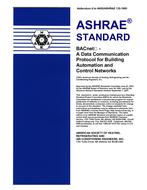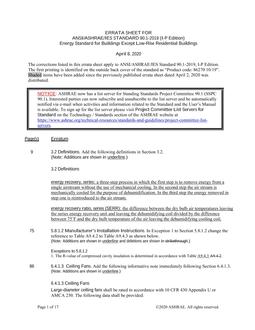Latent loads on cooling equipment are usually approximated by assuming a constant indoor relative humidity. This fails to account for the variations in latent loads that result from weather, occupancy, and ventilation characteristics . To properly address this issue, it is necessary to estimate the conditions of interior humidity under which the equipment operates.
To simulate time-dependent interior humidity, a moisture mass balance is applied to the control volume of the envelope of a residential structure. Moisture transport mechanisms incorporated include: infiltration, cooling coil condensation, internal generation from occupants, sorption from hygroscopic building materials, reevaporation of condensate, and air-to-air heat exchangers. Equations and computer algorithms are presented. Comparisons of model predictions and experimental data demonstrate acceptable accuracy.
Details are given on the application of the model in generating a regression equation that calculates seasonal performance factors (SPF) for cooling equipment. Inputs to the equation are: infiltration characteristics of the structure, summer humidity ratio hours, thermostat set point, and equipment EER. A data base of humidity ratio hours generated from TRY weather tapes is presented. Plots of SPF show strong variation with summer humidity ratio hours.
Citation: Symposium, ASHRAE Transactions, 1984, vol. 90, pt. 2B, Kansas City, MO
Product Details
- Published:
- 1984
- Number of Pages:
- 19
- File Size:
- 1 file , 1.7 MB
- Product Code(s):
- D-KC-84-05-4


